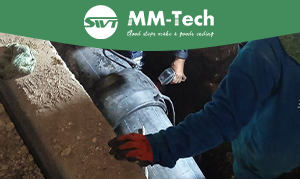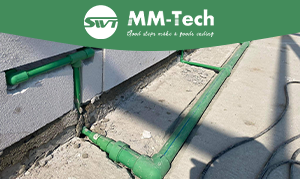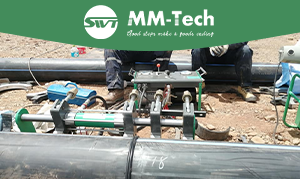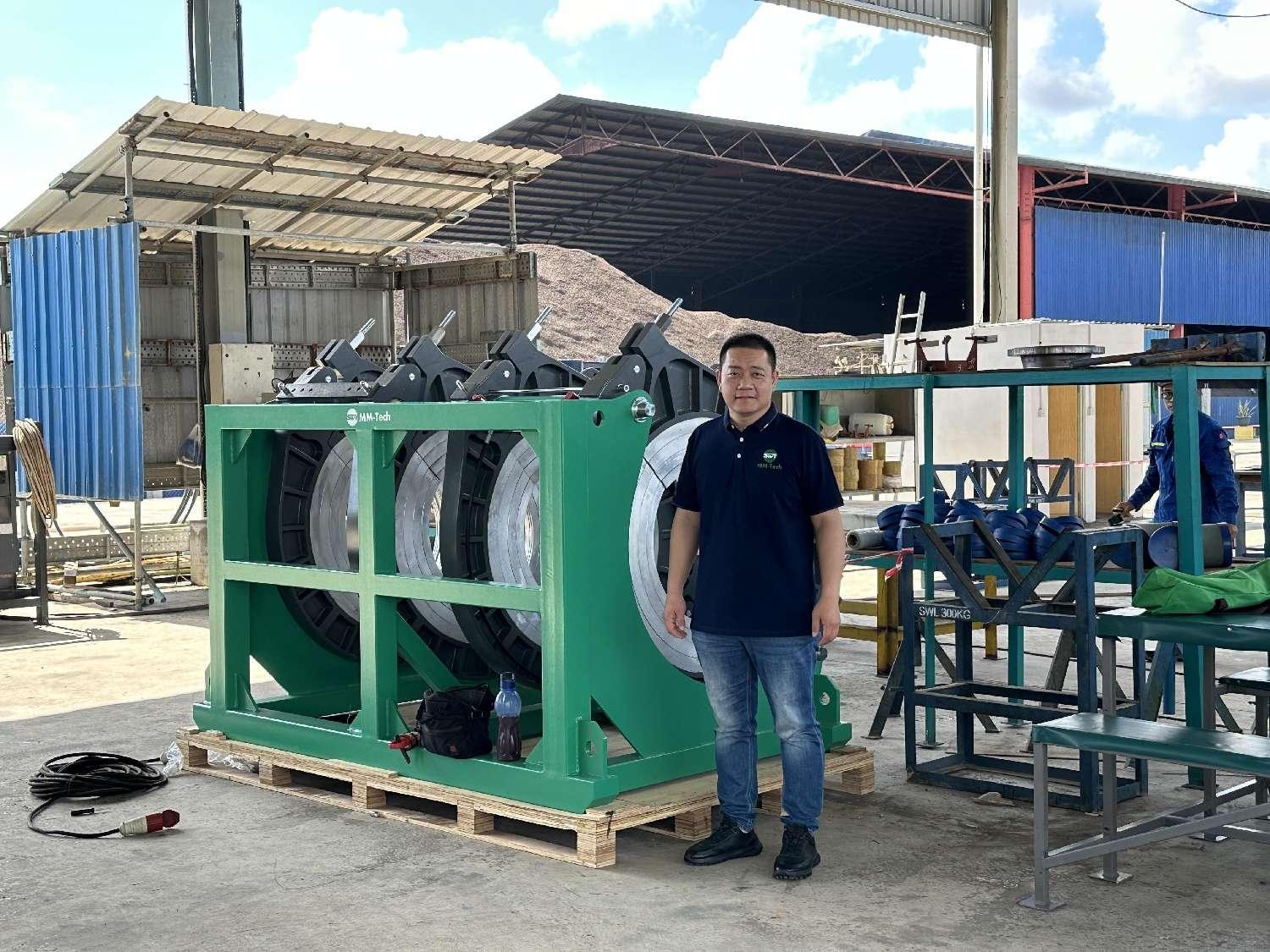Temperature plays a critical role in the welding process of high-density polyethylene pipes. Excessive heat can cause surface deterioration, uneven melting, and brittle fusion joints, while insufficient heating leads to weak bonds and potential leaks. Extreme cold or windy conditions can rapidly dissipate heat, compromising the flexibility and quality of pipe joints. Proper quality control and tools like an HDPE pipe jointing machine ensure durable and reliable connections.
Key Takeaways
Keep welding temperatures between 400°F and 450°F for strong joints. This range melts HDPE correctly and avoids weak connections.
Use modern tools like MM-Tech‘s Butt Fusion Machine for better control. These tools stop overheating and keep the quality steady.
Adjust welding methods based on weather. Use insulated covers and check equipment often to keep the right temperature.
Ideal Temperature Range for HDPE Welding
Importance of maintaining the optimal temperature range
Maintaining the correct temperature during the welding process is essential for ensuring the structural integrity of HDPE pipes. The ideal temperature range for welding HDPE lies between 400°F and 450°F. This range allows the material to melt properly without compromising its strength. Exceeding these temperature limits can cause the material to degrade, leading to weak joints. On the other hand, insufficient heating may result in incomplete fusion, which increases the risk of leaks and joint failure.
HDPE pipes are designed to withstand a wide range of environmental conditions, from -40°F to 140°F. However, during welding, precise control of the heating process is critical. Short-term exposure to temperatures up to 180°F is possible, but prolonged exposure can weaken the pipe’s durability. By adhering to the recommended temperature range, welders can achieve strong, reliable joints that meet industry standards.
Role of hdpe pipe jointing machine in achieving precise temperature control
An hdpe pipe jointing machine plays a vital role in maintaining the required temperature during the welding process. These machines are equipped with advanced heating systems that ensure consistent and accurate temperature control. For instance, MM-Tech’s Butt Fusion Machine features a digital temperature controller that allows welders to set and monitor the heating plate’s temperature with precision. This minimizes the risk of overheating or underheating, which can compromise the quality of the weld.
The machine’s anti-stick Teflon-coated heating plate ensures uniform heat distribution, preventing material deformation. Additionally, its user-friendly design and centralized control panel make it easier for operators to manage the heating process effectively. By using an hdpe pipe jointing machine, professionals can achieve optimal welding conditions, even in challenging environments, ensuring durable and leak-proof connections.
Effects of Too High Temperatures on HDPE Pipe Welding
Material deformation and its impact on joint quality
Excessive heat during the fusion process can cause significant material deformation in HDPE pipes. When temperatures exceed the recommended range, the surface of the pipe may soften excessively, leading to uneven melting. This compromises the uniformity of the fusion process, resulting in weak and unreliable joints. Deformation also affects the alignment of the pipes, which is critical for achieving a strong bond. Proper temperature control ensures that the material melts evenly, maintaining the structural integrity of the joint.
Weakening of joint strength and long-term durability
High temperatures can reduce the long-term durability of HDPE pipe joints. Prolonged exposure to heat beyond the operational range of -40°F to 140°F can degrade the material’s properties. At 180°F, HDPE may lose 15-25% of its tensile strength, which directly impacts the mechanical integrity of the fusion joint. Additionally, thermal expansion caused by excessive heat can place stress on the joint, increasing the risk of damage over time. Proper installation techniques and adherence to temperature guidelines are essential to mitigate these risks.
Key effects of high temperatures on HDPE include:
Softening of the material, leading to deformation.
Reduced pressure ratings and tensile strength.
Increased susceptibility to stress and damage.
How MM-Tech’s Butt Fusion Machine minimizes overheating risks
MM-Tech’s Butt Fusion Machine offers advanced features to prevent overheating during the fusion process. Its digital temperature controller ensures precise heat management, allowing operators to maintain the optimal range for HDPE welding. The anti-stick Teflon-coated heating plate distributes heat evenly, reducing the risk of material deformation. These features, combined with a user-friendly design, make the machine an ideal solution for achieving high-quality fusion joints while minimizing the risks associated with excessive heat.
Effects of Too Low Temperatures on HDPE Pipe Welding
Challenges of achieving proper fusion at low temperatures
Welding HDPE pipes in extreme cold weather presents unique challenges. Low temperatures reduce the thermal energy required for proper fusion, making it difficult to achieve a strong bond. The material becomes less pliable, which hinders the fusion process. Additionally, the reduced flexibility of HDPE in cold conditions increases the risk of cracking during installation. Welders must compensate for these challenges by using specialized equipment and adhering to strict temperature guidelines to ensure the fusion process is successful.
Increased risk of brittle joints and leaks
Extreme cold weather significantly impacts the quality of HDPE pipe joints. The material becomes brittle, particularly in frost-prone areas, increasing the likelihood of pipe failures. Brittle joints are more susceptible to leaks and damage under stress or load. This poses a serious risk to water supply line failures, especially in regions with freezing temperatures. Adhering to proper fusion techniques and using advanced tools can mitigate these risks, ensuring the durability of the joints.
Key risks associated with low temperatures include:
Higher chances of cracking during installation.
Greater susceptibility to leaks and long-term failure.
How MM-Tech’s hdpe pipe jointing machine ensures consistent performance in cold conditions
MM-Tech’s hdpe pipe jointing machine offers reliable solutions for welding in extreme cold weather. Its advanced heating system ensures consistent temperature control, enabling proper fusion even in challenging conditions. The anti-stick Teflon-coated heating plate provides uniform heat distribution, reducing the risk of brittle joints. Additionally, its user-friendly design allows operators to monitor and adjust settings effectively, ensuring high-quality results. This makes MM-Tech’s equipment an essential tool for achieving durable and leak-proof connections in cold environments.
Practical Tips for Temperature Control During HDPE Welding
Using advanced tools like MM-Tech’s Butt Fusion Machine for precise temperature management
Precise temperature management is essential for achieving high-quality fusion joints in HDPE welding. Advanced tools like MM-Tech’s Butt Fusion Machine simplify this process by offering features such as a digital temperature controller and anti-stick Teflon-coated heating plates. These components ensure consistent heating within the optimal range of 400°F to 450°F, which is critical for melting HDPE pipe ends effectively.
Additional tools, including infrared thermometers and thermocouples, enhance temperature monitoring. Infrared thermometers provide instant surface temperature readings, while thermocouples allow continuous monitoring during the fusion process. These tools, when used alongside MM-Tech’s equipment, ensure precise control, reducing the risk of overheating or insufficient melting. This level of accuracy is vital for maintaining the integrity of water system infrastructure and preventing leaks.
Best practices for welding in varying environmental conditions
Environmental factors significantly impact the fusion process. Welders must adapt their techniques to ensure consistent results. Following these best practices can help:
Maintain a preheat temperature between 400°F and 450°F before starting the fusion process.
Use insulated covers or welding tents to stabilize temperatures in extreme cold or windy conditions.
Regularly calibrate heating elements to ensure consistent performance.
Adjust heating parameters based on environmental conditions to prevent heat loss.
Document heat input and deviations for quality assurance and future improvements.
These measures ensure that the fusion process remains effective, even in challenging environments, safeguarding the durability of water system infrastructure.
Importance of monitoring and adjusting temperature settings
Monitoring and adjusting temperature settings during the fusion process is crucial for achieving reliable joints. Welders should use calibrated heating tools, such as MM-Tech’s Butt Fusion Machine, to maintain consistent heating. Before each fusion cycle, confirm the plate temperature using infrared thermometers and take multiple readings to ensure uniformity.
Proper cooling is equally important. Allow the joint to cool naturally to avoid stress or deformation. The cooling process should align with industry standards to ensure the joint’s strength and durability. By prioritizing temperature monitoring and cooling, welders can enhance the reliability of HDPE pipe connections, ensuring long-term performance in water system infrastructure.
Temperature control plays a pivotal role in ensuring the quality and durability of HDPE pipe joints. Properly welded joints exhibit seamless connections, reducing the risk of leaks and extending the lifespan of piping systems. MM-Tech’s hdpe pipe jointing machine, equipped with advanced features, ensures precise temperature management, enabling professionals to achieve robust and reliable joints under varying conditions.
Tip: Regularly inspect and align pipes before welding to minimize defects and enhance joint strength.
FAQ
What is the recommended temperature range for welding HDPE pipes?
The ideal temperature range for welding HDPE pipes is 400°F to 450°F. This ensures proper melting and fusion, resulting in strong and durable joints.
How does MM-Tech’s Butt Fusion Machine improve welding quality?
MM-Tech’s Butt Fusion Machine ensures precise temperature control with its digital controller and anti-stick Teflon-coated heating plate. These features enhance joint strength and reduce welding defects.
Can MM-Tech’s equipment handle extreme weather conditions?
Yes, MM-Tech’s hdpe pipe jointing machines perform reliably in extreme conditions. Their advanced heating systems maintain consistent temperatures, ensuring proper fusion even in cold or windy environments.









